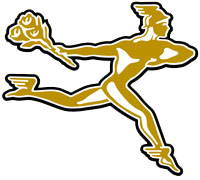Efficient Running Technique – For Heavy and Light Runners
This is an exciting running technique which can help you run faster if you are already a good runner and it can help you run without injury if you are “running-challenged” like I am. Why should you take my advice on running? I can only run 7 minute miles, and I’m even slower when I do the 10K portion of a triathlon so I’m certainly not the fastest runner. Why listen to a very large, slow, 50 year old runner with chronic tendonitis and a bi-partate patella? Because to run at all I needed to find the most efficient, lowest impact running technique possible! 140 pound teens don’t need technique, they can just spin their legs quickly to run fast.
I am presenting two techniques you can try here. If one doesnt work for you then try the other!
There are two advantages to my technique
- It is more efficient, allowing you to run faster and have better endurance
- It reduces joint stresses to a bare minimum reducing the chance of injury
If you just getting started, please see my jogging for beginners page.
Efficiency
Ever watch the Kentucky Derby? Have you noticed that jockeys don’t sit on the horses? Ever wonder why that is? The jockey uses his knees and quads to effectively “float” above the horse, this minimizes inertial losses. Inertial losses occurs when something bounces. When a rubber ball bounces, each bounce is lower than the last because in each bounce part of the energy is converted into heat. Likewise, if a jockey just sits limp on the horse then the horse has to work extra hard to bounce the jockey up and down. On the other hand, if the jockey uses his legs as self-leveling device to keep his torso “floating” over the track at a constant height then the work the horse must produce to move the jockey is minimized. See where this is headed?
Fast forward to the gym, we have all experienced this. You hear this WHAM! WHAM! WHAM! coming from the treadmill area – it sounds like a clydesdale horse running on the treadmill. You look and to your surprise, its not a 400lb man but a 90lb woman! If you watch carefully, you will see that the woman is POUNDING the treadmill. Each stride she bounces up what seems like many inches then she lands straight legged, heel first and BANGS the treadmill like she was trying to kill monster cockroaches. She is like the jockey sitting limp on the horse, she is bouncing up and down and all that bouncing wastes energy that could be used to propel her forward!
Minimize Joint Stresses
Does this sound like you? You say you can’t run because:
- you are too fat
- big bodybuilders “can’t” run
- your knee hurts
- your foot hurts
- your hip hurts
- you are too old
Well with this technique, even people who have joint issues (like me) find they can run because the stresses on the joints are minimized. If you have run in the past and had injuries or problems, its probably because you were running like the 90lb woman trying to crush cockroaches – wham, wham, wham! The impact force on the knee can be 300% to 400% of bodyweight with this type of running, that means that the 90lb person can generate 360lbs of force on the knee joint. People who are light can sometimes get away with this brutal running technique but heavier folks like myself cannot. The problem is that the knee joint of a 300lb person is basically the same knee as the 90lb person, if an average human knee can handle 400lbs of force, then the 90lb person can get away with the cockroach crushing running style because for them it only generates 360lbs of force. However, the 300lb person using the same horrible running technique generates a bone-crushing 1200lbs force on a knee joint that can only withstand 400lbs. Now do you see why running technique is so incredibly important for us heavy folks??
Scooby’s Clydesdale Technique
My running technique has three components. They are not hard to master because each of the steps is easy to visualize and train independently.
- The Floating Head
- Claw and Kick
- The Torsional Spring
The Floating Head.
Like the prize winning jockey, your goal is to float over the ground. Watch the beautiful video up above, that’s what you want to achieve. Your head should neither bounce up or down, but just float at a constant height over the ground. If you “float” rather than bounce then you are using your energy to propel yourself forward rather than wasting it on the inertial losses of bouncing up and down. Visualize a tea cup filled with scalding water on top of your head – don’t spill it! You can even try running while balancing something on your head. You will naturally fall into the non-bounce stride when you think of your head floating. Mid stride you will bend your knees a bit more to keep your torso from bouncing upward. There are a number of ways to practice this and break yourself of the traditional “heel first, roll onto your ball” crush those cockroaches running technique. Barefoot running on pavement is way too dangerous in my book, save that for elite runners and those with 1/2″ foot calluses. My favorite place to practice this is by running barefoot on hard pack sand, low tide provides nice hard sand. The hard pack sand is hard enough to constantly remind you that you cant land heel first but soft enough to provide some cushion and prevent injury. For those who don’t have access to sand, use Scooby’s patented pea technique.
Taking cue from sleeping beauty, a pea is a great and inexpensive training device. In your running shoes, take a split pea and tape it in the heel of each shoe with the flat side down directly under the center of the heel. Best to use painters masking tape and replace it after every run, duct tape turns into a sticky, gooey mess. What this does is provide a gentle reminder on every stride to land on your claws (the ball of your foot) and not your heel! If you attempt to use the clydesdale cockroach crushing heel first running technique you will be very quickly and painfully reminded that you need to land on the balls of your foot. If the split pea is a bit too painful for you, start out with a lentil. A good way to check if your floating head technique is working is to look carefully at the horizon while you are running. If you are running properly, it should look like a rock-steady pan-cam in a movie. If you are doing it incorrectly you will see the horizon jolt and shake on every footfall. Note, you have to look at the horizon or something very far away to notice this effect easily.
It takes a long time to gain the ankle flexibility and the calf strength required to do this kind of running, you need to ramp up very carefully to avoid overuse injuries. When you are first starting out, only practice this for 5 min twice a week for the first month. The second month, increase the time to 10 min twice a week. Continue adding 5 minutes to the time every month till you work up to your normal running duration. Continue ramping up in this fashion till you can do your whole run without landing heel first. Running barefoot on sand you need to be especially careful and use the slow ramp up technique. Not only do our have our foot muscles atrophied from wearing shoes but they have decreased ankle flexibility, this is why many people who run barefoot get achilles problems. Take a look at a pair of tennis shoes or running shoes – the heel is significantly higher than the ball of the fool. What this means is that when you are walking the trailing ankle does not have to bend as much, take off the shoes and the ankle has to bend another 5 degrees. This may not sound like much but it can be enough to cause serious pain if you don’t have the required flexibility.
Claw and Kick.
Running speed is your leg rpm multiplied by your stride length. If you can increase your stride length you will run faster without having to turn your legs into a human egg beater. Think about a long stride. Visualize the logo of the FTD florist, the runner with one leg extended way out front nearly horizontal and the rear leg pointed backward also nearly horizontal. Hamstring flexibility is required for this extension, you might need to start a daily stretching routine. Sand is the perfect place to practice this as I have found being barefoot makes it much easier to visualize your “claws”. When you put your foot forward, try to put your claws in first and put reach them as far forward as you can. Try to keep your rear foot in the sand as long as you can, even try to flick sand backward with your toes. Claw and kick, claw and kick. Visualize that FTD florist logo!
The Torsional Spring.
Most people run like a poorly animated cartoon character, their legs spin like an egg beater while their torso is completely motionless. The core of your body, that is the abs and obliques, can help you run faster and longer if you let them. Use your core as a torsional spring. You know those old fashioned anniversary clocks that only need winding once a year on your anniversary? The pendulum on these clocks hangs from a thin metal torsional spring which allows the pendulum to spin one direction, then it slows down and stops, then spins the other direction. Think of your torso as this torsional spring. Every stride, your shoulders stay motionless while your hips rotate with respect to them – this does several things. First it lengthens your stride (which makes you run faster) because your hips are twisted, your forward foot can reach further forward and your rearward foot can reach further back. Second, by engaging your ab muscles in the running you are putting more muscle power into your stride – allowing you to run faster and further. The “torsional spring” technique works amazing when combined with the “Claw and Kick” technique but perfect each of them separately before putting them together.
Metronoming
This is an awesome technique suggested by NWTdarren at the sweat4health forum which I have found very helpful in my recent return to running after my umbilical hernia surgery. “Metronoming”, as in to use a Metronome. What is very interesting is that running cadence determines a lot of things including whether you lean forward or backward and whether you heel-strike when you land or if you mid-foot land to absorb the impact. The faster your cadence, the more you tend to lean forward and the more you landing moves forward in the foot. The slow the cadence, the longer the strides, and you tend to lean back and the landing moves back toward the heel. By simply setting the metronome for an appropriately high BPM, you can avoid the jarring heel-strike that destroys knees, hips, and ankles. What I find is that I really like taking long, loping, slow strides when I run and I can keep impact forces very low if I use the above Scoobys Clydesdale Technique BUT, I have to concentrate on it. If my mind wanders for an instant, I regress to heel strike. On the other hand, running to the beat of a metronome is very pleasant – therapeutic, in fact. It makes it much easier to enter a zen-like mediative state when running.
You can get a free metronome app for your android or iPhone, the above is the one I have. Start it and turn it on loud so you can hear it. It will take a bit of experimentation to find your proper BPM. I am old and have long legs so I find that 157bpm works well for me. My guess is that younger folks with shorter legs would be faster than that. I would start out with 160bpm and see how that works for you. Plan on it taking 10 minutes or so of futzing to figure out a cadence that works for you.
The thing I find is that at the beginning of the run, it helps make me run faster by taking longer strides. At the end of the run … it keeps me running. A big problem I have is that in the second half of a run, when I have to stop at a stop light its is REALLY hard to get started again. Without the metronome in days past, a stoplight near the end of my run might end the run but not now. What I find is that the metronome gets me started again. When the light turns green, I dont think about having to run but rather I just kind of run in place to the beat. Only when I am ready do I start moving forward and after about 10 seconds I am back up to my normal pace. Truly a great way to keep a run enjoyable till the end.



